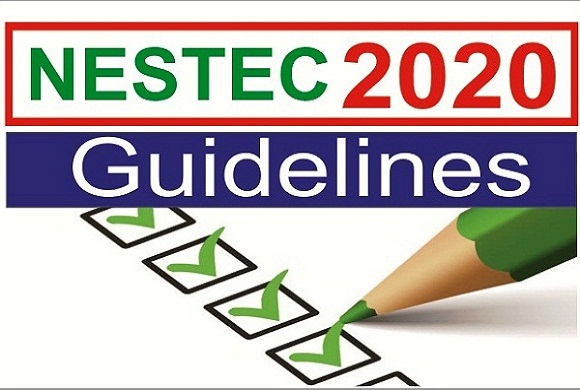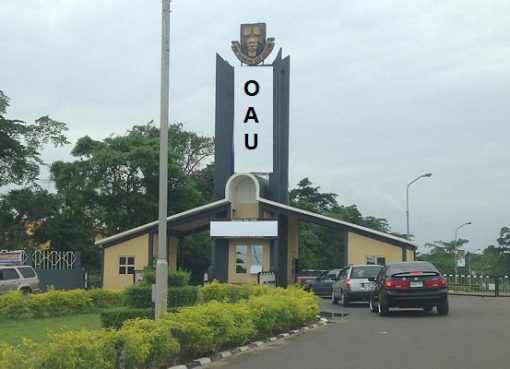CALL FOR PAPER: Papers are invited from engineering students in tertiary institutions in Nigeria. Invitation for paper cuts across electrical/electronic, mechanical and civil engineering and their subspecialties. Authors are free to choose topics that are original and relevant to the needs of the Nigerian society.
GUIDELINES FOR AUTHORS
Manuscripts presenting Original Research work(s) or any other original contribution(s) are welcome. The manuscript should be written in English Language. The paper should not have been published anywhere and should not be under consideration for publication elsewhere at the time of submission.
Your report should meet the following standards:
Paper size: A4; Font Name: Times New Roman; Font Size: 12 pt (for normal text); Left Margin, Right Margin, Top Margin and Bottom Margin should each be 2.5cm.Line Spacing: 1.5; Header and Footer: 0.5cm; Maximum number of pages: 30
The manuscript should contain the features listed below:
Title page:
The title page should contain only the title of the article/work, contact details of the author such as name, institutional affiliation, email address and telephone number. Please note that the title should not exceed fifteen (15) words. The title should be concise and informative. It should be written in uppercase and lowercase letters, not all uppercase
Abstract:
The first page of the manuscript should contain the title of the article, name of the author, the abstract, five or six relevant key words. Enter key words or phrases in alphabetical order, separated by commas.
The abstract is the heart of the paper/report. It should be a brief summary of the contents and conclusions of the paper/report. The abstract should not exceeding 200 words. It must clearly give the overview of the paper/report. (Avoid unnecessary words/things in the abstract). The abstract must be concise yet a comprehensive reflection of what is in the article. In particular, the abstract must be self-contained, without abbreviations, mathematical equations, tabular material, footnotes, or references. The abstract must be written as one paragraph.
Introduction:
It should include the background to the study, research problem definition, brief survey of relevant literature, aim and objectives for doing the research, scope, project features if any, feasibility study, intention of the paper/report and the impact of the study.
Theoretical Analysis: (where applicable) –
This should be presented in a clear and concise manner, with all symbols defined in the text.
Mathematical principles and/or theories used should be included as appropriate. Symbols and abbreviations and acronyms should be defined where first mentioned. Abbreviations that have periods should not have spaces. If the symbols are many, a “Notation” defining the symbols must be included between the abstract and Introduction. International System of Units (SI) units should be used. Numerical value must be separated from the Physical Unit by one space.
Illustrations and Tables:
Photographs should be glossy black and white prints of high contrast. All diagrams should be imported into the text and be formatted by resizing. MS-Excel, Text Art & Draw are preferred for creating illustrations. Graphs must be plotted using MS-Excel. Very clear scanned diagrams and pictures are also acceptable.
All illustrations should be numbered in sequence and referred to in the text and captioned as Fig. 1, Fig. 2, etc., with appropriate legends. (Other graphical and word processing software may be used).
All Tables should be numbered in sequence and referred to in the text as Table 1, Table 2, etc., with appropriate captions. Usually the figure Names/Titles are written below the figure and table Names/Titles at the top of the table. All figures should have proper description by legends, title of the axes and any other information to make the figures self-explanatory.
Equations:
All equations must be numbered in sequence and cited in the body of the paper as “eqn. ( )”. MS Equation Editor must be used. All symbols must be incorporated in the text. All equations should be centered and have one line space between equations and text material. Displayed equations should be numbered simply as (1), (2), (3). The numbers should appear at the extreme right of the line in parentheses
Experimental Work: (where applicable) –
This section should include apparatus and equipment setup, materials, design, experimental methods and procedure as applicable. Sufficient information should be given to permit repetition of the investigation.
Results:
Results/Outcomes of the study can be presented in text, descriptive, tabular or graphical forms. Information presented in tables should not be repeated as figures. Tables and Figures should be placed as close as possible to the first place of reference. References should be made to all the tables and figures in the manuscript. Allow one line of space between the table title and the table and between the figure and its caption. Allow two lines of space between the table or figure and the adjacent text.
Discussion:
Discussion should be focused on the interpretation of experimental findings. Key findings should be related to other published research and future trends of the research. The significance of the results in relationship with the aim, objectives and methodologies of the investigation should be given.
Conclusions:
The conclusion should be a brief summary of findings. It should clearly state the key results, highlights of major findings, contributions, relevance of the contributions/findings and recommendations, as appropriate.
General:
Use one space after periods and colons. Use a zero before decimal points: “0.85,” instead of “.85.”A statement in parenthesis at the end of a sentence is punctuated outside of the closing parenthesis (like this), whereas (A statement in parenthesis is punctuated within the parentheses.)
Prefixes such as “non,” “sub,” “micro,” “multi,” and “ultra” are not independent words; they should be joined to the words they modify, usually without a hyphen. There is no period after the “et” in the Latin abbreviation “et al.” (it is also italicized). The abbreviation “i.e.,” means “that is,” and the abbreviation “e.g.,” means “for example” (these abbreviations are not italicized).
References:
Referencing Methods/Styles include: Harvard Style; IEEE Style; American Institute of Physics (AIP) style; American Psychological Association (APA) style; Vancouver style; Chicago style; Commonwealth Scientific and Industrial Research Organisation (CSIRO) style; Modern Language Association (MLA) Style
In citing references, the first letter of all author’s name must be in capital and the surnames must be followed by the initials in all cases irrespective of the number of authors. These should be followed by the year, title of the article referred to, the journal containing it, volume and the first and last pages in that order. The system (alphabetical listing) of referencing should be used in the body of the manuscript while only essential references must be cited and listed. Examples of citing references include: Omeiza (2012) or (Omeiza, 2012) as appropriate; Olaniyan and Oje (2002) or (Olaniyan and Oje, 2002) as appropriate; Ogunlela et al. (2006) or (Ogunlelaet al. 2006) as appropriate. Examples of listing references are as follows:
Books
Adedayo, S. M. (2000). Graphics for Engineers. Indemac Publishers, Ilorin, Nigeria.
Journals
Omeiza, I. O. A. (2012). An Investigation on the Problem of Thinning in Fingerprint Processing. Nigerian Journal of Technological Development, 9 (1): 26 – 36.
Olaniyan, A. M. and Oje, K. (2002). Some Aspects of the Mechanical Properties of Shea Nuts. Biosystems Engineering, 81 (4): 413-420.
Ogunlela, A. O.; M. Y. Kasali and I. E. Ahaneku. (2006). Hydrologic Characterization of the National Centre for Agricultural Mechanization (NCAM) Watershed. Journal of Science and Technology Research, 5 (3): 69-73.
Conference Papers
Akorede, M. F., and Hizam, H. (2009). Teaching power system analysis courses using MATPOWER. Paper presented at International Conference on Engineering Education (ICEED2009), Kuala Lumpur, Malaysia, 45-51, USA: IEEE.
Reports, Thesis and Dissertation
Abioye, A. M. (2001). Design of Engineering Power Transmission Elements using Visual Basic. Unpublished M.Eng. Thesis, Department of Electrical & Electronics Engineering, University of Ilorin, Ilorin, Nigeria.
Web Publications
Anderson, T. (1996). A Data Envelopment Analysis (DEA). Available online at: www.emp.pdx.edu/dea/homedea.html. Accessed on March 7, 2013.
Appendices: (If any)– Appendices are provided to give supplementary information, which if included in the main text, may serve as a distraction and cloud the central theme. Appendices should be numbered using Arabic numerals, e.g. Appendix 1, Appendix 2, etc. Tables and References appearing in appendices should be numbered and referred to at appropriate places.
Acknowledgement:(Where applicable) –
Acknowledgement of individuals who provided help and substantial contributions during the research, in the area of conception, materials, design, acquisition of data, analysis and interpretation of data, drafting the manuscript or revising it critically for important intellectual content, but who do not meet the criteria for authorship should be stated.
Please also include the source(s) of funding.
Those doing their PhD research are exempted from the competition.
SUBMISSION: All papers submitted, assessed and qualified for the competition by the Technical Committee shall be published on the Engineers’ Forum blog. The TC shall note public comments from published work.
PRESENTATION: Only papers selected for the awards shall be presented in powerpoint multimedia format at the event.
LISTING: All selected papers shall be listed in the Event Brochure with a brief profile of the authors. Thus, authors shall submit along with full papers their profile not more than 50 words detailing names, school, age, course of study, paper title and hobby.
PROOF OF STUDENTSHIP: Only persons whose studentship can be proven and valid on the date of the event are eligible to participate.
PRIZES/AWARDS:
- Best Paper Presenter Award shall go home with N500,000
- First Runner Up Award shall win N300,000
- Second Place Award shall win N200,000
- Consolation prizes would be given to most interactive papers
PARTICIPATION CERTIFICATE: A certificate of participation will be given to students whose work passed the assessment criteria and were published on Engineers’ Forum. This category of persons shall be eligible to apply to the elite Authors’ Forum if they so wish.
SUBMISSION DEADLINE: Submission of Abstract and full paper shall not be later than 31st of August, 2020.
COPYRIGHT: All accepted paper shall remain the copyright of Blue Apple (owner of Engineers’ Forum)
DATE OF AWARD CEREMONY: 14th November 2020
TIME: 9 am
VENUE: Sheraton Hotel & Towers, Ikeja, Lagos
PARTICIPATION/ENTRY IS FREE











Here it is again, the biggest and the most precious engineering contest in Nigeria. This year it has catapulted to a whopping sum of 1 million Naira. But, for me as the 2019 first prize winner of the prize I think the money is not even the attention grabber, but rather the bunch of opportunities NESTEC offers. The opportunities are too much to count. The only I will dare is; this is an opportunity that shouldn’t pass any engineering student in Nigeria.